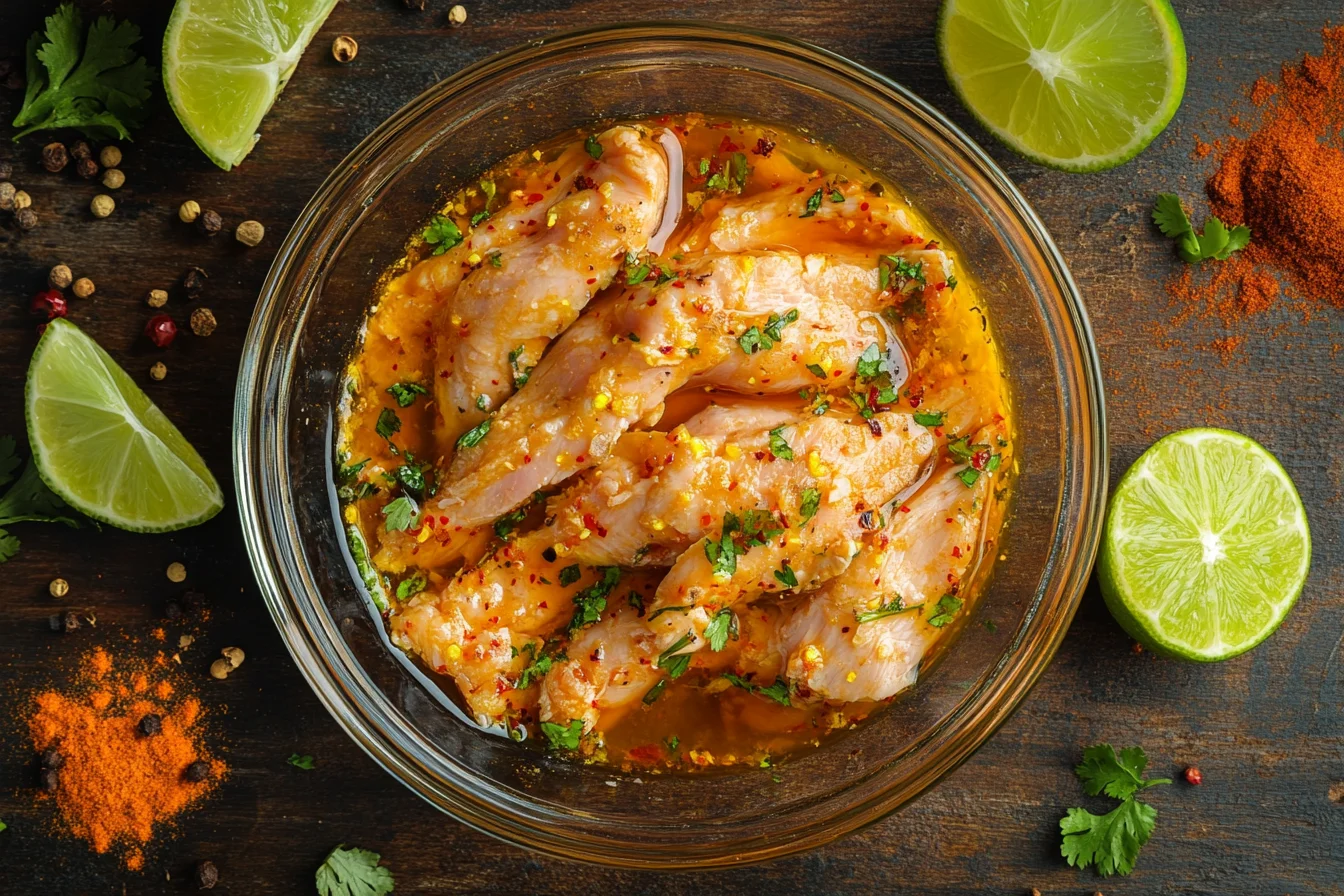Table of contents
Alright, let’s talk fajita marianed. Those sizzling platters of flavorful, tender chicken, vibrant peppers, and onions, all wrapped up in a warm tortilla – they’re pretty much a crowd-pleaser, right? But what’s the real secret to achieving that authentic, restaurant-style fajita flavor at home? You guessed it: the marinade. A good chicken fajita marinade is the unsung hero of any fajita feast. It’s what transforms ordinary chicken into a flavor explosion. And today, we’re diving deep into the world of chicken fajita marinades, exploring everything from the key ingredients to pro tips for maximum deliciousness. Therefore, we’ll explore how to make the best marinade for your next fajita night. So, buckle up, grab your aprons, and let’s get marinating!
What Exactly Is a Chicken Fajitas Marinade?
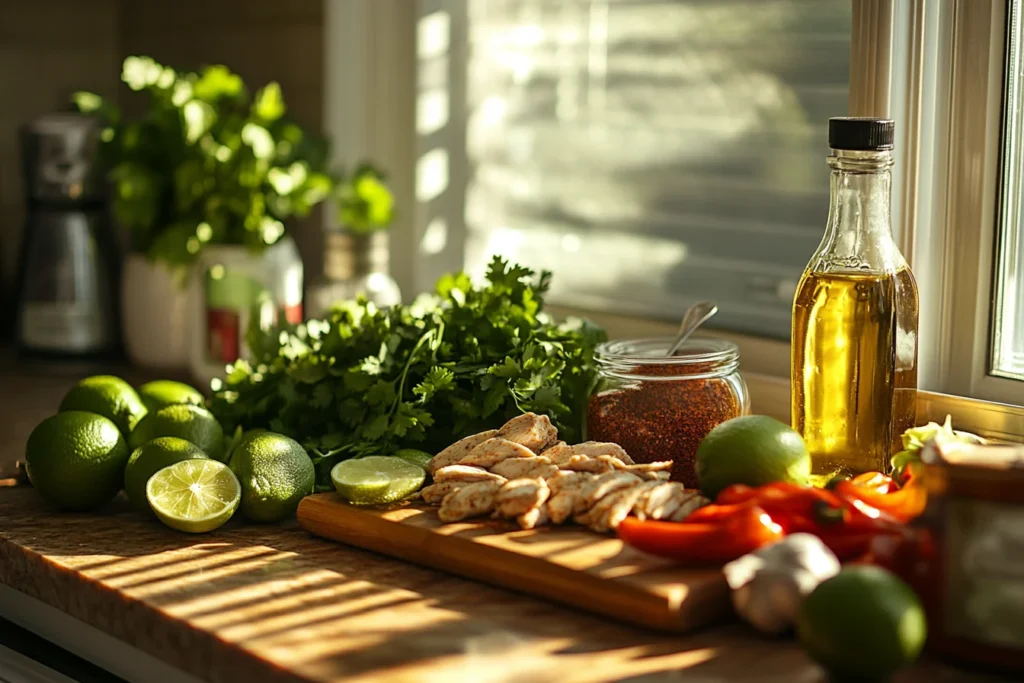
The Marinade’s Role in Flavor and Tenderness
Okay, let’s start with the basics. A marinade is basically a flavorful liquid that you soak your chicken in before cooking. This process does a couple of amazing things. Firstly, it infuses the chicken with tons of flavor, ensuring that every bite is packed with deliciousness. Secondly, it tenderizes the meat, making it super juicy and succulent. This is especially important for chicken breasts, which can sometimes be a bit dry if not treated right. A good marinade can work wonders. It’s truly the difference between an ‘okay’ fajita and a ‘wow, this is amazing!’ fajita. Also, the marinade helps to keep the chicken moist while cooking, preventing it from becoming dry and tough.
Core Components of a Great Marinade
While there are countless variations, most good chicken fajitas marinades share some common ingredients. We’re talking things like acids (citrus juice, vinegar), oils (vegetable, olive), and a mix of spices and herbs. These components work together to create a symphony of flavors that will elevate your fajitas to the next level. These are the foundational elements, and we’ll explore them a little more in a bit, so keep reading. Not only that, but the balance between these core components is crucial for creating a well-rounded and flavorful marinade.
Essential Ingredients for the Best Chicken Fajitas Marinade
The Acidity Factor: Citrus Power
Citrus is an absolute must in a fajitas marinade. Think lime juice, lemon juice, or even orange juice. The acidity not only adds a bright, zesty flavor but also helps to break down the proteins in the chicken, making it more tender. It also helps the flavors permeate the chicken more thoroughly. Lime juice is particularly popular in Mexican cooking, making it a great choice for that authentic fajitas taste. Don’t skimp on the citrus! It’s a game changer. Furthermore, the type of citrus you use can influence the overall flavor profile. For example, orange juice will add a hint of sweetness compared to lime juice.
Oils: The Flavor Carrier
Oils are another critical component. They help to carry the flavors of the spices and herbs throughout the marinade and distribute them evenly over the chicken. Olive oil is a great choice for its flavor and health benefits. But you can certainly use other oils like canola or vegetable oil. The key is to have some kind of oil to help all the other ingredients do their job. Without it, your marinade won’t be nearly as effective. Similarly, different oils have different smoke points, which is something to consider when cooking at high temperatures.
The Spice Rack: Flavor Central
Now, let’s get to the fun part: the spices! This is where you can really customize your marinade to your liking. Common spices for chicken fajitas marinades include chili powder, cumin, garlic powder, onion powder, paprika, and oregano. You can also throw in some cayenne pepper for a bit of heat, or smoked paprika for a deeper flavor. It’s all about experimenting to find your perfect blend. Don’t be afraid to get creative in this area. It’s a chance to really make your marinade your own. Also, consider the freshness of your spices. Freshly ground spices will always deliver the best flavor.
Herbs: Fresh or Dried
Fresh or dried herbs can add another layer of flavor. Cilantro is a popular choice in Mexican cuisine, so adding a bit of chopped fresh cilantro to your marinade can be a great idea. If you don’t have fresh herbs on hand, dried oregano works very well. You can even mix in a little dried thyme or parsley if you’re feeling adventurous. Just be mindful that dried herbs are much more concentrated than fresh, so you may need to use less of them. Finally, when using fresh herbs, remember to chop them finely to ensure the flavors are evenly distributed.
Optional Additions for Extra Zing
Soy Sauce or Worcestershire Sauce
A splash of soy sauce or Worcestershire sauce can add depth and umami flavor to your marinade. These sauces contain glutamates that enhance other flavors, creating a more complex profile. They also add a hint of saltiness, which is essential for a well-balanced marinade. Just remember to go easy, because these can overpower a marinade if used in excess. However, when used correctly, they can add a whole new dimension of flavor.
Vinegar: A Tenderizing Powerhouse
A little bit of vinegar, like apple cider vinegar or white vinegar, can also help tenderize the chicken. Vinegar, like citrus, is an acid that breaks down proteins and helps the flavors penetrate deeper. It can add a slight tang that compliments the other flavors nicely. Just a splash or two is usually enough to do the trick. In addition to tenderizing, the small amount of vinegar can also help to brighten the flavor of the marinade.
Honey or Agave: A Touch of Sweetness
Adding a touch of sweetness to your marinade, with honey or agave, can create a lovely balance with the other flavors. The sugars in these sweeteners also help with caramelization during cooking, which adds another layer of flavor and texture. You only need a very small amount to achieve this, though, so don’t overdo it. Besides, a little bit of sweetness can help cut through the acidity of the citrus, creating a more rounded flavor profile.
Making Your Chicken Fajita Marinade: Step by Step
The Simplest Method: Whisk It Up!
The easiest way to make a chicken fajitas marinade is by whisking all the ingredients together in a bowl. Simply combine your citrus juice, oil, spices, herbs, and any optional ingredients, and whisk until well combined. There’s nothing complicated about it. This process takes only a couple of minutes and, voila, you have a killer marinade ready to go. Additionally, if you’re using dried herbs, whisking can help release their flavors.
A Little Extra: Blending for Smoothness
If you want to take your marinade up a notch, you can blend it in a food processor or blender. This will create a super smooth consistency and help all the flavors meld together beautifully. This can be a good option if you’re using larger chunks of garlic or herbs. The blending process will fully incorporate them for maximum flavor. Furthermore, blending helps to evenly distribute all the ingredients, creating a more uniform and flavorful marinade.
Marinating Your Chicken: Best Practices
How Long to Marinate?
The length of time you marinate your chicken is important. You want to give the marinade enough time to work its magic, but you don’t want to over-marinate it, as that can make the chicken too soft. Generally, 30 minutes to 2 hours is a good timeframe. If you’re in a rush, even 15-20 minutes can make a difference. If you’re planning ahead, you can marinate it in the fridge for up to 24 hours. Just be mindful of the ingredients and don’t overdo it. Because the longer it marinates, the more the flavors will penetrate, it is important to find the sweet spot.
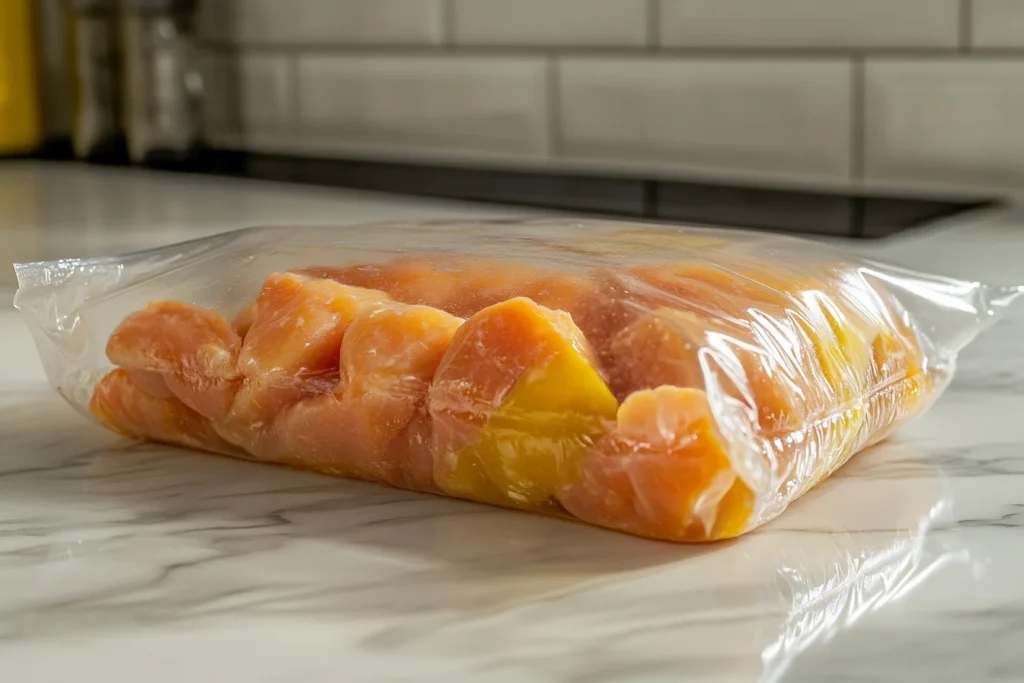
The Right Container is Key
It’s crucial to use a container that will allow the marinade to come in full contact with the chicken. A resealable plastic bag works great, as you can squish out the air and make sure the chicken is fully submerged. You can also use a glass or ceramic container. Just make sure whatever you use is food safe and airtight. Avoid using metal containers, as they can react with the acidity in the marinade. On the other hand, using the wrong type of container could alter the flavor and quality of the marinade.
Ensuring Even Marination
For best results, make sure your chicken is fully submerged in the marinade. If you’re using a bag, try to distribute the marinade evenly. If you’re using a container, flip the chicken a few times during the marinating process to ensure all sides are exposed to the liquid. The more contact the marinade has with the chicken, the more flavorful and tender it will be. Similarly, rotating or flipping the chicken throughout the marinating process will lead to better results.
Cooking Your Marinated Chicken: Methods and Tips
Grilling: The Classic Choice
Grilling is a fantastic way to cook marinated chicken for fajitas. The high heat gives the chicken a beautiful char and smoky flavor. Just be sure to not overcook it, as this will dry it out. You want those beautiful grill marks, but you also want tender chicken. Also, grilling allows for any excess marinade to drip away, which can lead to a better texture and flavor.
Pan-Frying: Quick and Easy
Pan-frying is another great option, especially if you don’t have a grill. You can use a cast-iron skillet or a regular frying pan. Make sure the pan is hot and use a little oil to prevent sticking. Cook the chicken until it’s nicely browned and cooked through. Consequently, pan-frying is an efficient way to quickly cook your chicken without the need for special equipment.
Oven Baking: A Convenient Method
If you prefer to use the oven, you can bake your marinated chicken at 375 degrees Fahrenheit for about 20-25 minutes or until cooked through. This is an easy and convenient method. However, you won’t get the same char as with grilling or pan-frying. While oven baking may not be ideal for browning, it does result in evenly cooked chicken every time.
Tips for Perfectly Cooked Fajitas Chicken
Whatever cooking method you choose, make sure the chicken is cooked through to an internal temperature of 165 degrees Fahrenheit. Avoid overcrowding the pan or grill, as this can prevent proper browning. Let the chicken rest for a few minutes after cooking to allow the juices to redistribute, making it more tender. Above all, using a meat thermometer is the best way to know when your chicken is done.
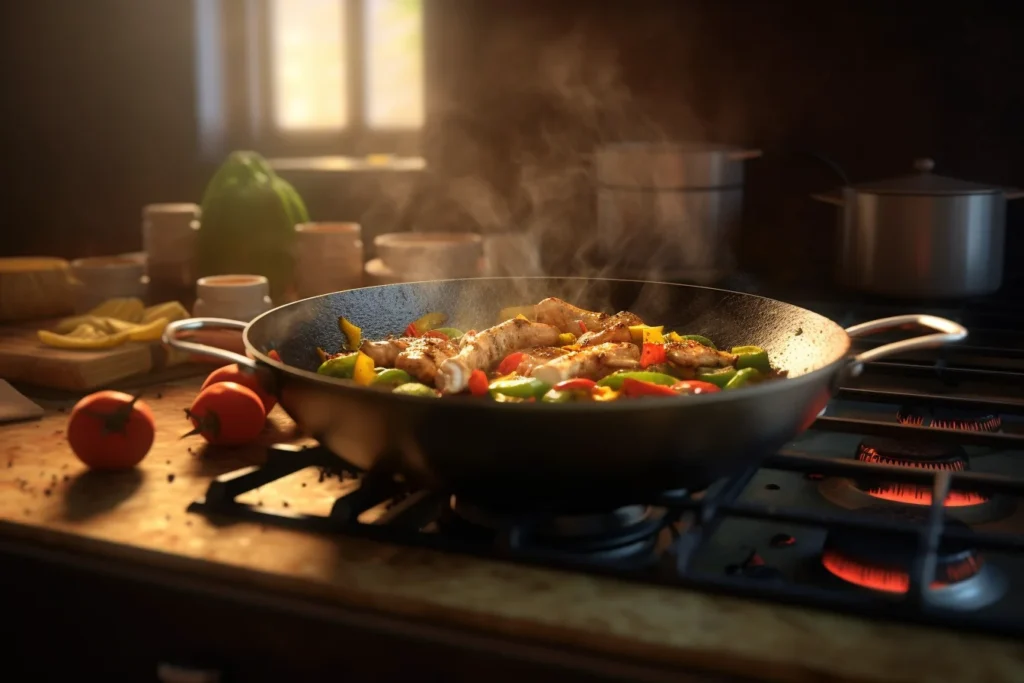
Serving Your Chicken Fajitas: Completing the Feast
Sizzling Presentation is Key
The presentation is almost as important as the taste! Serving your chicken fajitas on a sizzling platter with bell peppers and onions is a great way to make them feel more special. It also keeps the food warm as you bring it to the table. This experience can truly make your meal more memorable. Also, the sizzle and aroma as the platter comes to the table will enhance the anticipation of the meal.
Warm Tortillas: The Perfect Wrap
Warm tortillas are essential for a good fajita experience. You can heat them up in a skillet or in the microwave. Serve the warm tortillas alongside the chicken and veggies for your guests to assemble their own fajitas. Similarly, some people prefer to use a dry pan for warming tortillas, as it gives them a slightly toasted flavor.
Toppings Galore: Customize Your Fajitas
Don’t forget the toppings! Sour cream, guacamole, salsa, shredded cheese, and pico de gallo are all great choices. Put out a variety of toppings and let everyone customize their fajitas to their liking. This way, everyone gets a meal that they love. In addition, having a variety of toppings allows your guests to create their perfect fajita.
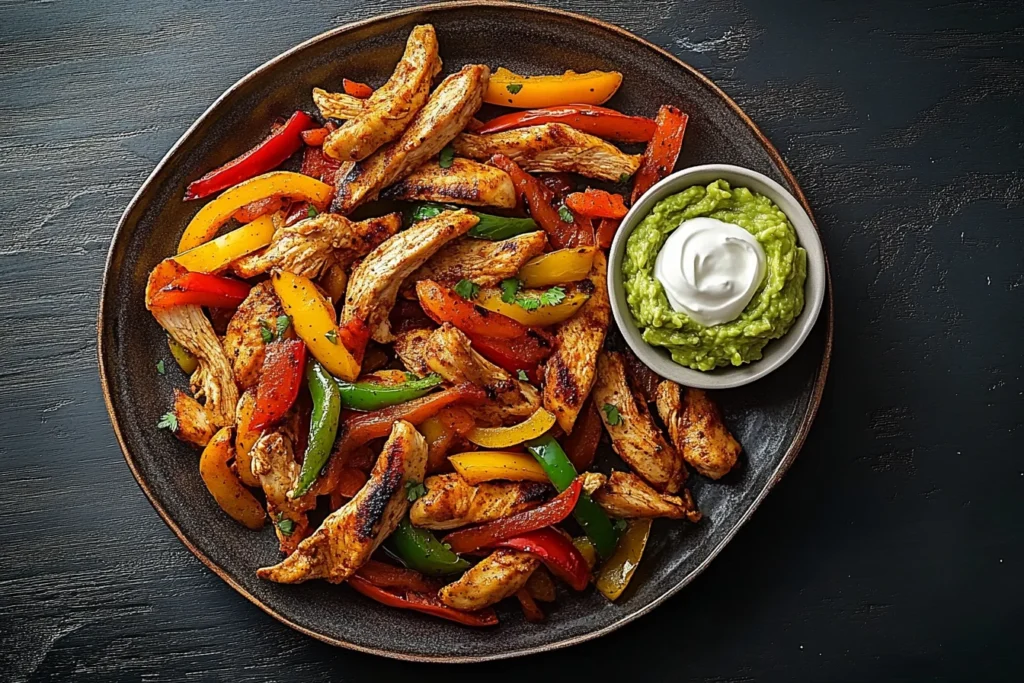
Check out Chicken Parmesan alfrode recipe!
Storing Leftover Marinade and Chicken
Can You Reuse Marinade?
Once the marinade has been in contact with raw chicken, it’s not safe to reuse. However, you can reserve a small amount of marinade separately before adding the chicken, and then use this to brush the chicken while it cooks, or to baste the cooked chicken for added flavor. Therefore, if you want to reuse marinade, you must set some aside before it comes into contact with raw meat.
Storing Cooked Chicken
Any leftover cooked chicken can be stored in an airtight container in the refrigerator for up to 3-4 days. You can reheat it in the microwave, in a skillet, or in the oven. Certainly, storing cooked chicken properly helps to prevent foodborne illnesses.
Common Mistakes and How to Avoid Them
Over-Marinating the Chicken
Marinating the chicken for too long can make it mushy. Follow the recommended marinating times, which is typically 30 minutes to 2 hours. Don’t leave it overnight, unless you’re using a very mild marinade. Because of this, it’s always best to adhere to the marinating guidelines, so your chicken does not become too soft.
Not Enough Acidity
If your marinade lacks enough acidity, it won’t tenderize the chicken properly, and the flavors won’t penetrate as deeply. Don’t be afraid to use enough citrus juice or vinegar. This is what gives the chicken that perfect flavor and tenderness. Additionally, the acidity helps to create a more balanced flavor profile overall.
Skimping on Spices
Don’t be shy with the spices! They’re what gives your fajitas their unique flavor. Experiment with different blends to find what you like best. This is the area where you can really make your marinade your own. Finally, the spices are what really contribute to that distinct fajita taste, so don’t be stingy with them.
The Health Benefits of Chicken Fajita Marinade
Nutrient-Rich Ingredients
A good chicken fajitas marinade is not only delicious but also packed with nutrients. Citrus juices are rich in vitamin C. Spices like cumin and chili powder have antioxidant properties. The fresh herbs add vitamins and minerals. It’s a great way to get more flavor and nutrition into your diet. Since these ingredients are naturally rich in nutrients, you’re adding health benefits to your meal.
Controlling Sodium Intake
By making your own marinade, you can control the amount of sodium you’re adding to your food. This can be particularly important for people watching their sodium intake. You can also choose to use low-sodium soy sauce to further control sodium levels. Additionally, making your own marinade gives you control over all the ingredients that go into your food.
Exploring Different Variations of Fajita Marinade
Spicy Fajitas Marinade
For those who love a bit of heat, adding more cayenne pepper or using a hotter chili powder can create a fiery version of the marinade. You could also add a chopped jalapeno pepper for extra heat and flavor. Therefore, feel free to add more spice to your marinade to create a dish that will make your tastebuds tingle.
Smoky Fajitas Marinade
To achieve a smoky flavor, consider using smoked paprika or adding a splash of liquid smoke to your marinade. This will give your fajitas a flavor reminiscent of cooking over an open flame. Similarly, adding a chipotle pepper in adobo sauce will also add both heat and smokiness to your dish.
Citrus Forward Marinade
If you love a bright citrus flavor, try using a combination of lime, lemon, and orange juice in your marinade. This will create a very tangy and refreshing flavor profile that is both vibrant and delicious. Furthermore, this option is perfect if you’re looking for a lighter and brighter flavor profile.
Using Marinade for other Meats and Vegetables
Marinating Steak for Fajitas
The same principles for a chicken fajita marinade can be applied to steak as well. Use the same basic recipe and marinate your steak for at least a couple of hours before grilling or pan-frying. Just remember, tougher cuts of steak may require more marinating time.
Vegetable Fajitas
You can also use fajita marinade for vegetables! Bell peppers, onions, zucchini, and mushrooms all taste great when marinated and cooked. Marinate them for about 30 minutes to an hour for best results. This is a fantastic way to create a delicious vegetarian option as well.
Conclusion
So, there you have it – a complete guide to creating the perfect chicken fajita marinade. It really is the secret to restaurant-quality fajitas at home. It’s amazing what a little bit of acidity, some flavorful spices, and some oil can do! With a little experimentation and attention to detail, you’ll be able to create your own custom marinade that will impress your family and friends. It is worth the effort! It’s time to grab your ingredients, get cooking, and enjoy the sizzling, flavorful magic of homemade chicken fajitas!

